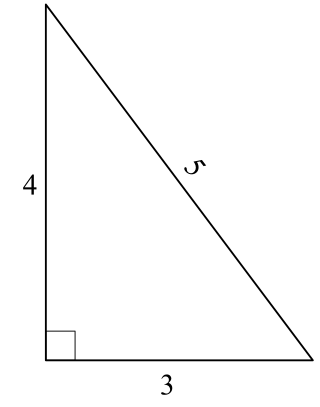In mathematics
Fifty-seven is the sixteenth discrete semiprime [1] (specifically, the sixth semiprime of the form , where is a prime strictly larger than 3). [2] It also forms the fourth discrete semiprime pair with 58.
57 is the third Blum integer since its two prime factors (3 and 19) are both Gaussian primes. [3] 57 has an aliquot sum of 23, which makes it the tenth number to contain a prime aliquot sum. [4] This also makes 57 the first composite member of the 23-aliquot tree (..., 57, 23, 1, 0). The only other numbers to generate an aliquot sum of 57 are 99, 159, 343, 559, and 703; [5] where 343 is the cube of 7, [6] and 703 the sum of the first thirty-seven nonzero integers. [7] Fifty-seven is also a repdigit in base-7 (111). [8]
57 is the fifth Leyland number, as it can be written in the form: [9]
57 is the number of compositions of 10 into distinct parts. [10]
57 is the seventh fine number, equivalently the number of ordered rooted trees with seven nodes having root of even degree. [11]
57 is also the number of nodes in a regular octagon when all of its diagonals are drawn, [12] and the first non-trivial icosagonal (20-gonal) number. [13]
In geometry, there are:
- 57 non-prismatic uniform star polyhedra in 3-space, including four Kepler-Poinsot star polyhedra that are regular. [14]
- 57 vertices and hemi-dodecahedral facets in the 57-cell, a 4-dimensional abstract regular polytope. [15]
- 57 uniform prismatic 5-polytopes in the fifth dimension based on four different finite prismatic families, and inclusive of one special non-Wythoffian figure: the grand antiprism prism.
- 57 uniform prismatic 6-polytopes in the sixth dimension, as prisms of all non-prismatic uniform 5-polytopes.
The split Lie algebra E7+1/2 has a 57-dimensional Heisenberg algebra as its nilradical, and the smallest possible homogeneous space for E8 is also 57-dimensional. [16]
57 lies between prime numbers 53 and 61, which are the only two prime numbers less than 71 that do not divide the order of any sporadic group, inclusive of the six pariahs. 71, the twentieth prime number, is the largest supersingular prime that divides the largest of these groups [17] while 57, on the other hand, is the fortieth composite number whose sum of divisors σ(57) is 80 and averages 20. [18] [19]
Although fifty-seven is not prime, it is jokingly known as the Grothendieck prime after a legend according to which the mathematician Alexander Grothendieck supposedly gave it as an example of a particular prime number. [20] The joke is that he is famous for working abstractly, without concrete examples. However, while the veracity of this legend about Grothendieck is unclear, it is known that this very error was committed by another famous mathematician Hermann Weyl in a published article. [21]



